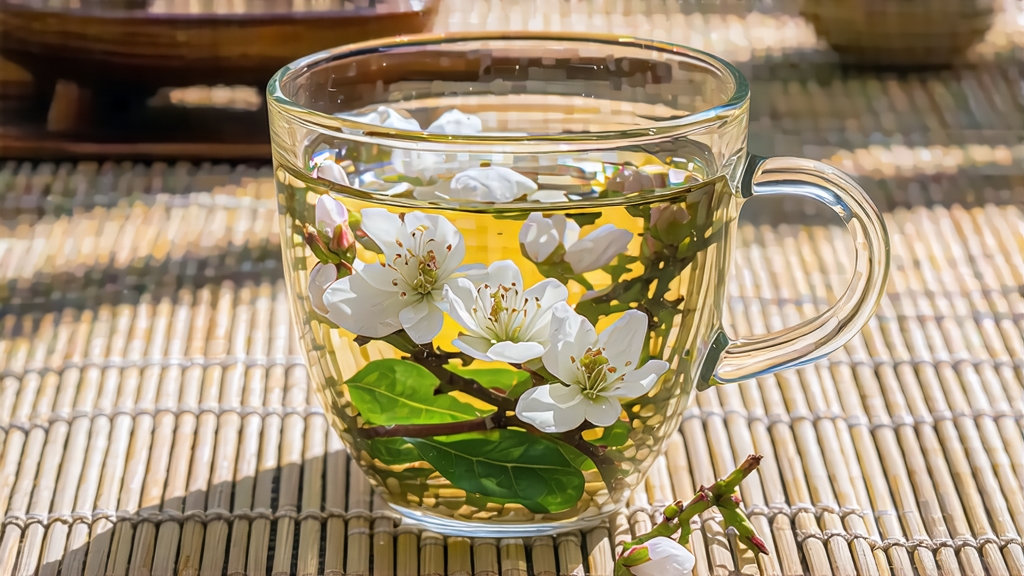
When the first spring mists rise over northern Fujian’s coastal hills, the tea gardens of Fuding and Zhenghe enter a brief, almost secret season. For only a handful of days—often fewer than ten—the perfect union of temperature, humidity, and solar gentleness allows the picking of Bai Hao Yin Zhen, the “Silver Needle” revered as the apogee of Chinese white tea. To international drinkers accustomed to rolled oolongs or smoky souchongs, Yin Zhen can seem almost ethereal: long, silvery spears that hardly look like tea at all, yet release a liquor luminous as pale chardonnay and perfumed with melon, pine nectar, and the scent of rain on hot slate. Understanding this tea means stepping into a micro-climate, a micro-history, and a micro-craft where time is measured in hours of dew and the down on a bud is worth its weight in silver.
Historical whispers
White tea’s documented story begins in the Song dynasty (960-1279), when the imperial court demanded “tribute teas” so delicate that only unopened leaf buds were accepted. Yet the name “white” does not refer to the leaf color alone; it signals a minimalist tradition whose hallmark is the absence of twisting, pan-firing, or rolling. By the late Ming (c. 1600) the counties of Fuding and Zhenghe had refined a technique of long natural withering that preserved the silvery pubescence on freshly sprouted tips. Export records from the early Qing show these needles packed in lead-lined chests, sailing from Guangzhou to Dutch and British merchants who marketed them as “Pekoe Silver Tips,” a luxury item priced above many black teas. In the 19th century European painters even used the reflective buds to imitate moonlight on still-life canvases, an artistic echo of the tea’s Chinese nickname “moonlight needle.”
Terroir and taxonomy
True Bai Hao Yin Zhen is fashioned exclusively from the Da Bai (Big White) and Da Hao (Big Down) cultivars whose buds can reach 2.5–3 cm in length and swell with a higher ratio of soluble amino acids than almost any other camellia variety. Two legally protected origin zones exist:
- Fuding—coastal, granitic soils, marine air, large diurnal range—yielding needles famed for jasmine-honey aromatics.
- Zhenghe—slightly inland, more cloud cover, red sandstone—producing a sturdier bud with cooler, herbaceous notes.
Within each zone micro-plots such as Guan Yang, Pan Xi, and Taimu Mountain add further nuance, so that a Yin Zhen from 400 m elevation can taste persuasively different from one grown at 800 m, even when processed identically.
Plucking ritual
The harvest window opens when the bud reaches “fish-tail” stage: still enclosed in its first two scale leaves but already plump enough to cast a tiny shadow. Experienced pickers work between 6:30 and 10:00 a.m., before direct sun removes surface moisture yet after dawn dew has evaporated. A strict “three no’s” rule applies: no purple buds (too lignified), no rain-soaked buds (risk of mold), no open leaves (that would make Bai Mu Dan instead). An average picker gathers just 500 g of fresh buds per day; 25,000 buds—roughly one small basket—are required to yield a single kilogram of finished tea.
Crafting without fire
Once back at the cottage courtyard, the buds are spread in a single layer on bamboo trays called “water screens.” For the next 36–48 hours they undergo a dual withering: first under shade with gentle airflow, then under filtered sunlight that never exceeds 28 °C. Enzymatic oxidation proceeds so slowly that chemists classify white tea as “non-enzymatic” relative to green or oolong, yet minute oxidative cascades create the tea’s signature creamy sweetness. Every two hours the tea master lifts a tray to shoulder height, tilting it to catch oblique light; by observing how fast the buds return to their original posture, she judges moisture loss to within a single percentage point. When the bud stem snaps audibly, the batch is moved to a low-temperature dryer (30–35 °C) for a final “foot-setting” of 20 minutes. No rolling, no shaping—only the patient choreography of air, time, and intuition.
Grading the moonlight
Finished Silver Needle is